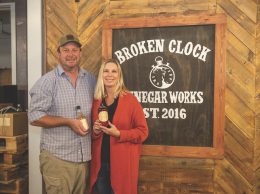Editorial: County should work with Chumash on vision for the Santa Ynez Valley
The Santa Ynez Band of Chumash Indians is asking the federal government to annex the so-called Camp Four property in the Santa Ynez Valley into its reservation, a move that would remove it from Santa Barbara County’s property tax rolls and from its onerous development process.
The Chumash bought the 1,390-acre property in 2010 for an estimated $40 million. The Chumash have a history with the rolling ranch at the intersections of highways 154 and 246. It’s a key part of their ancestral territory. And in more recent years, the tribe became part of a joint venture with real estate mogul Fess Parker to develop the property, an effort that failed in the mid-2000s.
When the Parker family sold the property to the tribe in 2010, it ignited speculation that the Chumash would move to bring the property into their reservation through a process known as “fee to trust.” If successful, that process makes it part of the tribe’s sovereign territory. The long and short of it is that the property comes off the county tax rolls — losing the county government millions of dollars over the years — and would allow the tribe to develop the property under federal environmental and zoning rules rather than the much stricter county ones. Tribal Chairman Vincent Armenta said in a news release that the the tribe attempted to work out a deal in which it would make payments in lieu of taxes but the talks got nowhere, forcing the tribe to apply for a fee-to-trust action.
If the past is any indication, there will be a massive and well-funded fight against the tribe’s move. While the fight has previously been the province of the valley’s wealthy preservationist elite, we now face the risk that the county of Santa Barbara will spend hundreds of thousands, if not millions, of dollars of taxpayer money fighting the Chumash application.
We do not know much about the intentions of the Chumash with their land. The anti-development crowd, of course, fears another monolithic casino. Until there’s evidence otherwise, we find it better to take the Chumash at their word that the land will primarily be used for housing for some of the 83 percent of tribal members that can’t fit on the current reservation. And it’s also instructive to look at the other recent investments in the valley by the Chumash: Hotel Corque, Root 246 and the Hadsten House. These are all modestly sized luxury tourist destinations that fit in well with the existing framework of the valley.
We think fears that the tribe will overdevelop the valley are drastically overblown. The win-win scenario would be for county officials to get back to the negotiating table to focus on a sustainable development of Camp Four that will both benefit the Chumash and build on the area’s successful tourist economy for the long term.











